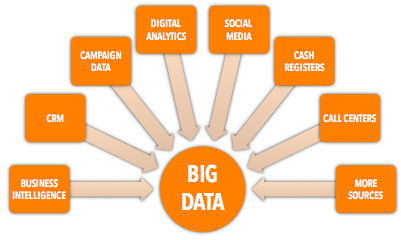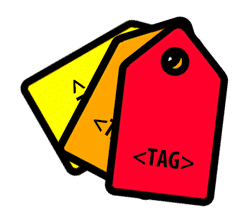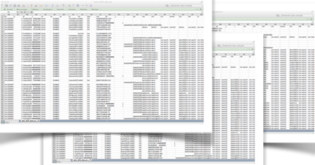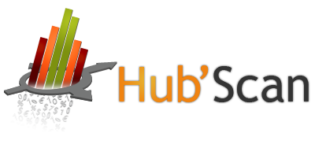Whatever your business or industry, any Big Data platform includes multiple and fundamentally heterogeneous data sources including (most frequently) data from your transactional databases, from your CRM database and from other digital marketing data sources (analytics, campaigns, targeting et al.).
Back to Big Data basics: digital data collection
This particular component of the marketing ecosystem has got a lot of attention in recent years, thanks to DMP (Data Management Platforms). This post focuses on the accuracy and quality of the data collected through digital marketing channels.

The promise of a DMP is being able to process paid traffic data (paid keywords, display banners) and link them to clickstream and behavioral data from digital analytics in order to optimize traffic acquisition budgets and push the right deal, at the right time and to the right audience. Nothing short of the Holy Grail of marketing. The only concern in using this methodology is that little to no attention is given to how data is collected or processed: data quality is too often an afterthought in a Big Data project.
Use tagging plans to describe and qualify data
This data quality problem is made worse due to the increasing number of data sources and to the increasing volume of data involved in Big Data projects. It also becomes increasingly difficult to trust the data to make strategic and operational decisions, let alone subjecting said data to dynamic attribution algorithms or to automated bidding platforms for online advertising.
Let’s take a textbook example from digital analytics, in which a company uses a tracking tool such as Google Analytics, Adobe Analytics, AT Internet or Webtrends (to name only a few) to measure website traffic and its potential for converting visitors into buyers, aka the conversion rate. In the last 15 years, these solutions have become full-fledged data collection platforms that rival major players from the conventional Business Intelligence market. These digital/web analytics solutions also provide more attractive & user-friendlier interfaces, which is a major factor for corporate adoption.
In the world of digital analytics, over 90% of data collection is done using Javascript tagging: a bit of tracking code is triggered every time a user views Web page or interacts with it, through clicks on a button for example.

This tagging can be very basic, as simple as inserting 4-5 lines of Javascript code into the HTML code of each page of a website. It doesn’t sound like quantum physics, right? After all, JavaScript is a technology that dates back to 1995, so one would think we should have mastered it 20 years later. Even then, many companies in the digital space still fail to implement basic tagging, which means they are missing out on a massive amount of information that should be collected but instead disappears into the Great Digital Void because pages are not tagged.
Let’s take the example of a media or content website that monetizes its traffic through ads. As is too often the case, the IT team “forgot” to tag 10% of the site’s pages with ad tags; as a results, ads are neither shown nor clicked. This could result in a 10% drop in revenue for that site just because tags were not implemented correctly!
This is why any digital marketer worth their salt just has to have a tagging plan which very often takes the form of an Excel document that specifies a tag inventory per page type as well as corresponding tag values. The tagging plan has become the cornerstone of a tag-based digital marketing data collection strategy. Using a tagging plan has become even more important now that a myriad of tag providers are popping up every week, each with a new purpose in the digital marketing ecosystem.

Companies have to handle too many tags on rapidly-changing sites. This is why tagging is neglected so often, even with basic, “vanilla” implementations. Here is some feedback we have received in the past and (unfortunately) continue to get:
“The previous development team lost the tagging plan”
“We forgot to install Google Analytics on the new mini-site. Is it bad?”
“We were not supposed to track form conversion, right?”
“So we changed the page templates but we had no clue where to insert tags.”
“Wait, you wanted us to check tagging installation on every single page of the website? But that would take ages!”
And the list goes on.. Unfortunately, the above remarks show the lack of education that still persists in 2015 when it comes to tagging web pages.
Tagging quality assurance as a business process
Digital marketers have gradually got around the importance of tagging with the arrival in the early 2010s of Tag Management Solutions (TMS). While using a TMS can centralize and help streamline tagging implementations, companies still don’t think of validating their tagging plan exhaustively.
Tagging quality assurance can be performed using the sampling method (through manual examination of a sample of pages) but that only provides a blurred view of the tip of the iceberg – which is not even a decent starting point. Unfortunately, the reason why companies use sampling is because (especially for large sites) even basic tagging quality assurance is a highly time-consuming activity that can amount to days, weeks or even months of work for a single consultant. These quality assurance resource requirements skyrocket with advanced tagging plans that enable the capture of rich data capture, involving tens (or even hundreds) of variables containing business values that must be validated against the allowed/expected values. In short, we must ensure that we capture the right data in the right format at the right time – hence the supreme importance of a tagging plan.

It is precisely with that data quality issue in mind that Hub’Scan, a SaaS solution, was designed and developed to automate tagging quality assurance tasks across the different Javascript tag-based digital marketing solutions available on the market. Hub’Scan can create a tagging validation workflow that allows digital marketing teams to validate the data collected on their websites and through their campaigns. By validating data collection with Hub’Scan, one ensures that the digital components of a DMP or Big Data platform are fed with certified data in line with their business requirements and expectations. With a tagging quality assurance solution, one can rest assured that KPIs and dashboards are driven by consistent data or that targeting campaigns will be trained will be made by accurate visitor information. This also means no longer losing sleep over attribution and dynamically updating keyword bids based on an under-reported conversion rate.
In conclusion, if you do not want “Big Data” to be synonymous with “Bad Data”, start worrying about the quality of your data! Ask us about Hub’Scan!
















Your email address is only used by Business & Decision, the controller, to process your request and to send any Business & Decision communication related to your request only. Learn more about managing your data and your rights.